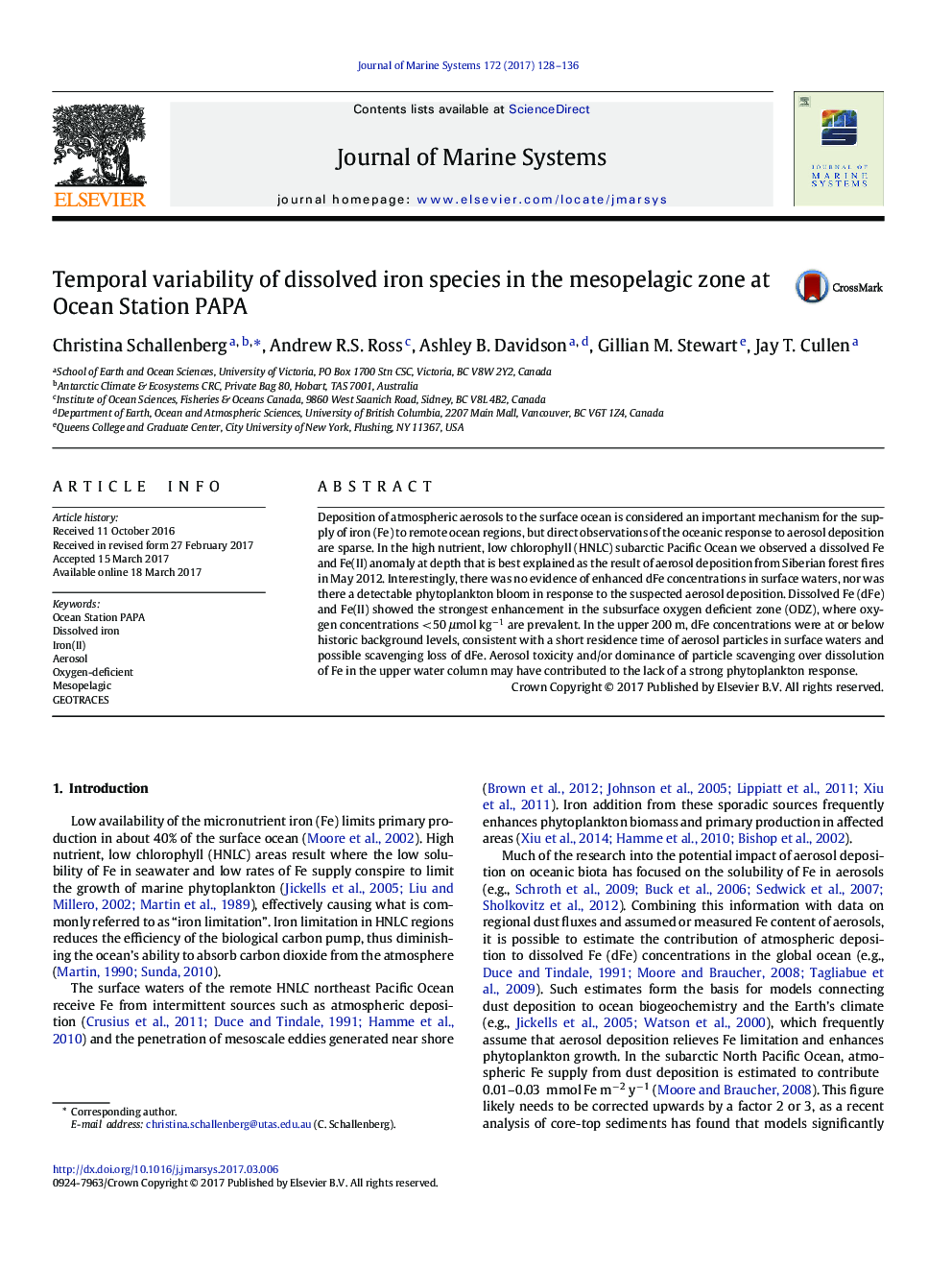| Article ID | Journal | Published Year | Pages | File Type |
|---|---|---|---|---|
| 5765996 | Journal of Marine Systems | 2017 | 9 Pages |
•A dissolved Fe enhancement in the mesopelagic zone of the NE Pacific was observed.•The anomaly was also evident in Fe(II) distribution with depth.•Aerosol deposition from Siberian forest fires is the likely cause of the anomalies.•Dissolved Fe at the surface was at background levels.•There was no evidence of a phytoplankton bloom.
Deposition of atmospheric aerosols to the surface ocean is considered an important mechanism for the supply of iron (Fe) to remote ocean regions, but direct observations of the oceanic response to aerosol deposition are sparse. In the high nutrient, low chlorophyll (HNLC) subarctic Pacific Ocean we observed a dissolved Fe and Fe(II) anomaly at depth that is best explained as the result of aerosol deposition from Siberian forest fires in May 2012. Interestingly, there was no evidence of enhanced dFe concentrations in surface waters, nor was there a detectable phytoplankton bloom in response to the suspected aerosol deposition. Dissolved Fe (dFe) and Fe(II) showed the strongest enhancement in the subsurface oxygen deficient zone (ODZ), where oxygen concentrations <50 μmol kg −1 are prevalent. In the upper 200 m, dFe concentrations were at or below historic background levels, consistent with a short residence time of aerosol particles in surface waters and possible scavenging loss of dFe. Aerosol toxicity and/or dominance of particle scavenging over dissolution of Fe in the upper water column may have contributed to the lack of a strong phytoplankton response.
